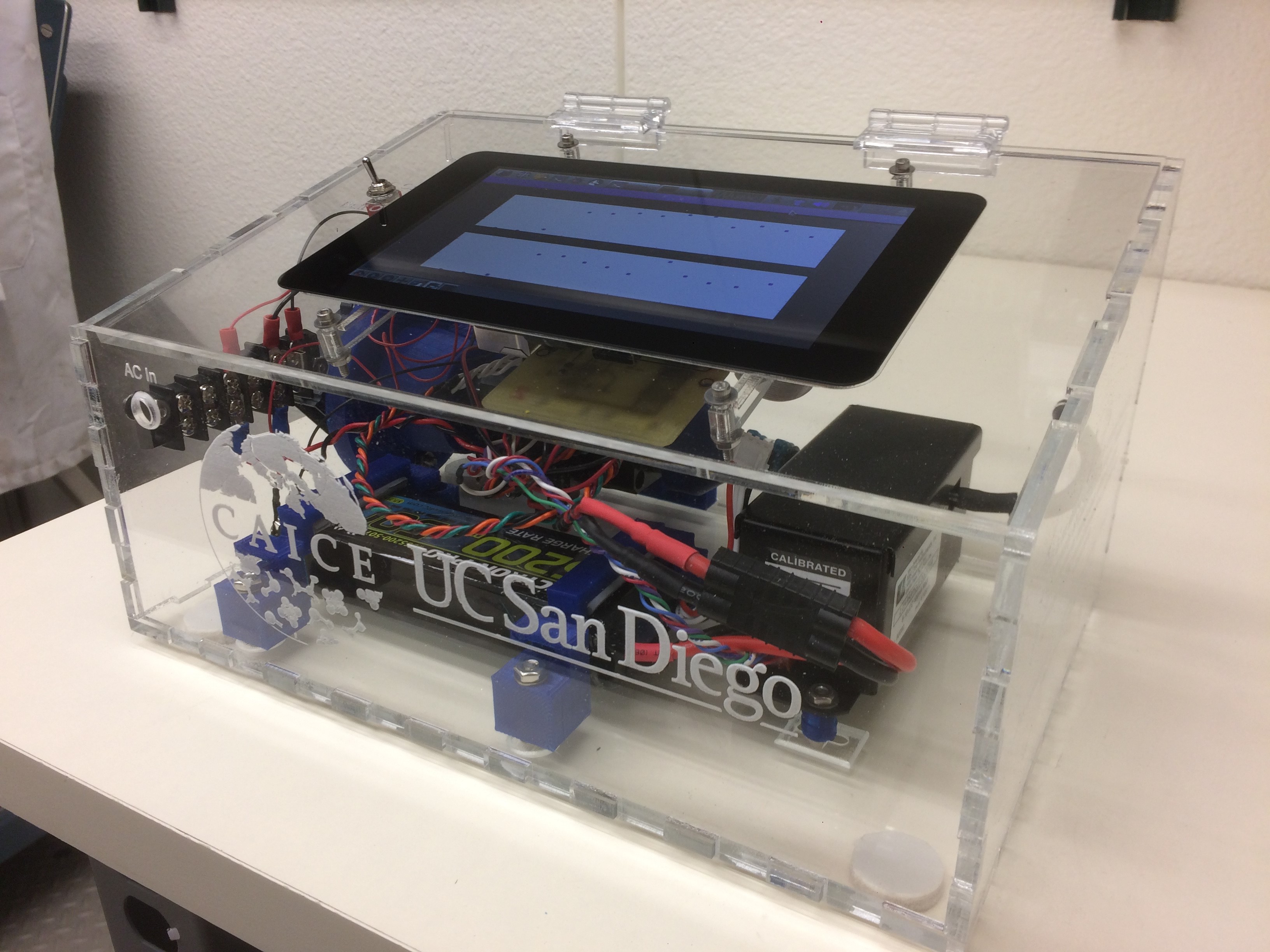CLEAR
Program
Citizen science project facilitating student learning about air quality, climate, and how aerosols impact their communities.
The CLEAR CAICE
Through a collaboration with Qualcomm Institute, CAICE is developing particle counters, called CLEAR-CAICEs (pronounced CLEAR-Cases), that can be used by students, citizen scientists, and university researchers to study levels of particulate matter in the atmosphere. These instruments use an air pump to generate a flow of air through an optical particle detector, which counts the number of particles in the sample. The optical particle detector then transmits the data to a computer or to a cell phone for analysis.

CLEAR-CAICE Components
The CLEAR-CAICE is an instrument that measures the number of particles in the air. It has two channels, one that counts the number of small particles (smaller than 1 micrometer), and one that counts the number of coarse particles (between 1-10 micrometers in diameter). A picture of the CLEAR-CAICE and its components is shown below. The instrument is in a clear case, so we can see all of the components.

The function of each component is listed below:
- Optical Particle Counter: Uses light scattering to measure the number and size of particles (see next page)–this component is the heart of the instrument.
- Air Pump: Pulls air from the environment through the air inlet and the particle counter, which allows us to sample the air in our environment.
- GPS: tracks the location of the CLEAR-CAICE, so you can accurately report where you took your measurements.
- Cell Phone Modem: used to control the instrument and transmit the data from the optical particle counter to a website, where you can view the levels of particulate matter on your computer.
- Charger: Converts AC power from a wall outlet to DC current, which is used to run the instrument.
- Power Supply: Stores power for running the instrument off of battery (not shown, stored below other components)
- Barrier Box (power): Helps transmit power from the power supply to the other components (ie optical particle counter, cell phone modem)
- Pump Power Supply: Decreases the voltage from the main power supply to provide the correct voltage to the air pump. The voltage supplied to the air pump determines the rate of air flow.
- Barrier Box (signal): Helps transmit signals from the switches on the side of the instrument to the cell phone modem.
How Does the Particle Counter Work?
The particle detector in the CLEAR-CAICE works by measuring the light scattering from particles. To review the concept of light scattering, check out this page . If you take apart the particle sensor, it has the following components:

Steps in Particle Detection
Now that you can see the different components inside the particle counter, lets take a look at how these components work together to detect and count particles. The figure below shows each of the steps of particle detection in detail.

Now that you know the steps in particle detection, check out the video below to see the optical particle counter at work. You may have to watch the video a few times to see all of the steps.
First, the air, containing particles (red dots) is pumped through the air inlet (the tube on the left). Perpendicular to the air pathway is a laser beam, represented by the green arrow.When the laser hits a particle, the light is scattered in all directions, and then reflected off of the reflector cap. The reflector cap focuses the light onto the photodiode detector, which measures the scattered light. The intensity of the light that is measured tells us about the size of the particle.
Want to bring the CLEAR CAICE to your students? Email the CAICE Director of Education, Outreach & Diversity at jmcconnell@ucsd.edu to see how you can get started.

